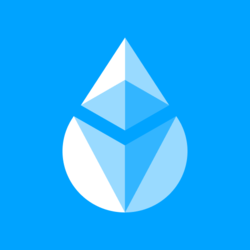Avalanche (AVAX) is a high-performance blockchain platform designed for building decentralized applications (DApps) and enterprise blockchain solutions. It emphasizes speed, scalability, low costs, and environmental efficiency.
Key Features of Avalanche
- High Throughput:
- Processes up to 4,500 transactions per second (TPS), significantly faster than many other blockchains.
- Low Latency:
- Transactions are finalized in less than 2 seconds, making it suitable for real-time applications.
- Scalability:
- Achieves high performance without compromising decentralization.
- Custom Blockchains:
- Developers can create custom blockchains (subnets) tailored to specific use cases while leveraging Avalanche’s security.
- Interoperability:
- Avalanche allows cross-chain communication and asset transfers between its subnets and other blockchains like Ethereum (via the Avalanche Bridge).
- AVAX Token:
- AVAX is the native utility token used for staking, transaction fees, governance, and securing the network.
How Avalanche Works
Avalanche operates on a unique consensus mechanism and consists of three blockchains:
- X-Chain (Exchange Chain):
- Used for creating and exchanging AVAX and other digital assets.
- Operates on the Avalanche consensus protocol.
- C-Chain (Contract Chain):
- Hosts smart contracts and DApps, compatible with Ethereum’s EVM (Ethereum Virtual Machine).
- Allows developers to deploy Ethereum-based DApps on Avalanche.
- P-Chain (Platform Chain):
- Coordinates validators and enables the creation of subnets (custom blockchains).
Use Cases of Avalanche
- Decentralized Finance (DeFi):
- Avalanche supports major DeFi protocols, including Aave, Curve, and Trader Joe, offering low fees and fast transactions.
- Enterprise Solutions:
- Enterprises can build custom, permissioned blockchains on Avalanche for specific business needs.
- Gaming and NFTs:
- Avalanche provides a scalable environment for NFT marketplaces and blockchain-based games, such as Crabada and Kalao.
- Cross-Chain Interoperability:
- Avalanche Bridge allows seamless asset transfers between Avalanche and Ethereum.
- Token Issuance:
- Custom tokens and stablecoins can be created and traded on the X-Chain.
How to Use AVAX
- Buying AVAX:
- Available on major exchanges like Binance, Coinbase, Kraken, and KuCoin.
- Store AVAX in wallets like Avalanche Wallet, MetaMask, or hardware wallets like Ledger.
- Staking AVAX:
- Stake AVAX to participate in network validation and earn rewards.
- Requires a minimum of 25 AVAX to delegate or 2,000 AVAX to run a validator node.
- Building on Avalanche:
- Developers can deploy Ethereum-compatible DApps or create custom subnets using Avalanche’s developer toolkit.
- Using Avalanche Bridge:
- Transfer assets between Avalanche and Ethereum with minimal fees.
Advantages of Avalanche
- Speed and Efficiency:
- Finality within seconds and low transaction costs.
- Eco-Friendly:
- Uses a proof-of-stake (PoS) consensus mechanism, reducing energy consumption.
- Flexibility:
- Supports custom subnets and Ethereum-compatible DApps.
Challenges and Risks
- Competition:
- Competes with other high-performance platforms like Solana, Polkadot, and Ethereum 2.0.
- Network Growth:
- Avalanche’s success depends on continued adoption by developers and users.
- Subnets Complexity:
- Custom subnets require technical expertise, which may deter some developers.
Key Metrics
- Total Supply: 720 million AVAX (capped).
- Staking Rewards: Approximately 8%–11% annual yield for validators and delegators.
- Transaction Fees: Dynamic, paid in AVAX and burned to reduce supply over time.
Notable Ecosystem Projects
- Trader Joe:
- A leading DeFi platform on Avalanche for trading, lending, and staking.
- Pangolin:
- Decentralized exchange (DEX) with low fees and high liquidity.
- Benqi:
- Protocol for lending, borrowing, and liquid staking.
- Crabada:
- Popular play-to-earn game leveraging Avalanche’s scalability.
FAQs
- What is Avalanche’s main advantage?
- High speed, low fees, and scalability without sacrificing decentralization.
- How does Avalanche compare to Ethereum?
- Avalanche is faster, cheaper, and eco-friendlier, while Ethereum benefits from a larger developer and user base.
- Can I build my blockchain on Avalanche?
- Yes, Avalanche enables the creation of custom subnets for specific use cases.





